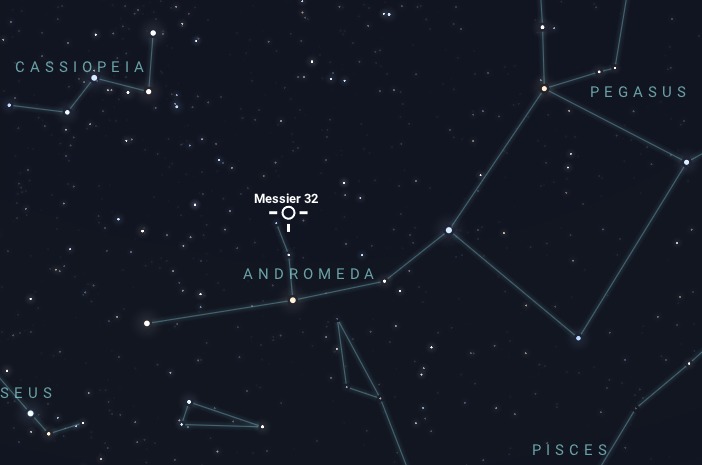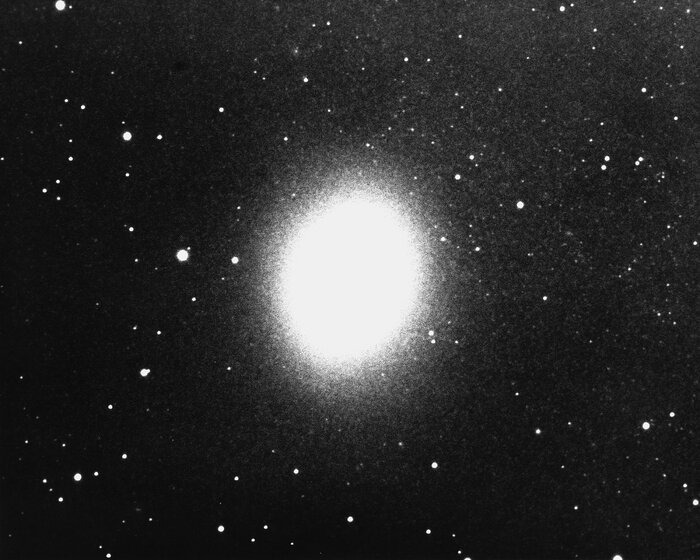M32, also known as Messier 32, is a dwarf elliptical galaxy and a satellite of the larger Andromeda Galaxy (M31). It is approximately 2.5 million light years away from earth. Due to its proximity to earth it is part of the Local Group. Here are some interesting details about this galaxy:
Composition and Structure
M32 has an apparent size of about 8.7 by 6.5 arc minutes, making it relatively small compared to its host galaxy, Andromeda. It has a smooth, elongated shape typical of elliptical galaxies, with a central bulge but no spiral arms. Its mass is about 3 billion solar masses.
The galaxy is composed mainly of older stars, with relatively little ongoing star formation compared to spiral galaxies. The stars move in random orbits rather than in a disk-like structure.
The gravitational interaction between M32 and M31 has likely affected their shapes and dynamics. The fomer is one of the most compact elliptical galaxies known.
Observation
Unlike its neighbour M31, M32 is too faint to be observed with the naked eye, but bright enough to be viewed with binoculars or amateur telescopes under dark skies.
The best months to see M32, largely depends on its position in the sky relative to the observer’s location. However, generally speaking, the best time to observe M32 is during the fall and early winter months in the Northern Hemisphere, as it is most favorably positioned in the evening sky during these seasons. Specifically, September to December provide the best views.
Additionally, it’s important to consider weather conditions and moon phases, as clear, moonless nights will improve visibility.




